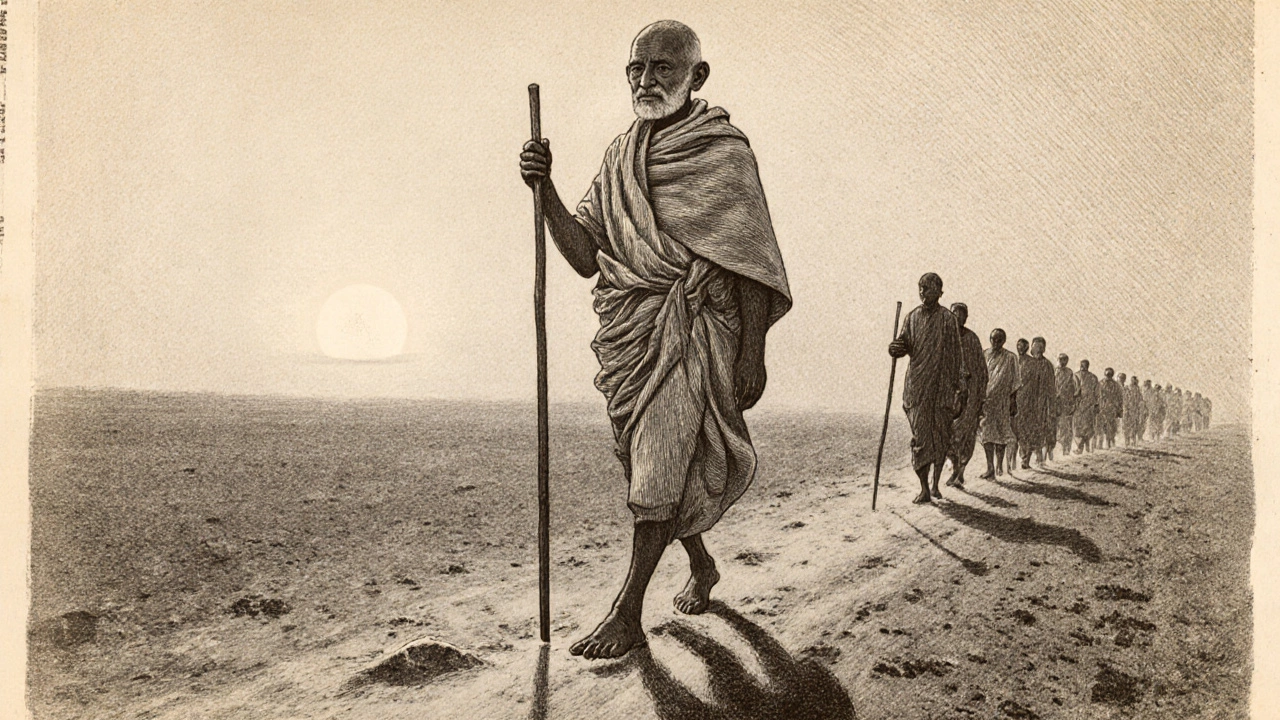Indian Motivation Planner
Daily Motivation Plan
What meaningful task serves your purpose, community, or growth?
How much time do you commit to mindfulness (5-10 minutes ideal)?
Break your task into small, actionable steps (e.g., 'Research' → 'Write draft' → 'Review')
Select a quote that resonates with you
Your Motivation Plan
Based on ancient Indian wisdom principles
Your plan will appear here after you click 'Generate Plan'
When you wonder what drives the Indian soul, the answer lies in a rich tapestry of philosophy, poetry and practice. Indian motivation blends timeless ideas about duty, inner strength and purpose that have guided millions for centuries. From the battlefield counsel of the Bhagavad Gita to the humble vows of Mahatma Gandhi, the Indian outlook on motivation mixes action with reflection. This guide breaks down those ideas, shares iconic quotes, and shows how you can use them today.
Ancient Foundations: Duty, Dharma & Karma
In ancient Indian thought, motivation is rarely a selfish push; it’s tied to a larger cosmic order. The concept of dharmic duty (righteousness) tells us that acting in line with one’s role-whether as a student, parent or leader-creates inner drive. The Bhagavad Gita captures this in a famous verse: "You have a right to perform your prescribed duties, but never to the fruits of those actions." The message is clear: focus on effort, not on reward.
Karma reinforces the same idea. When you understand that every action plants a seed for future outcomes, you’re more likely to act with purpose. This isn’t a mystical promise; it’s a practical mindset that turns procrastination into purposeful movement.
Philosophers & Reformers Who Shaped Modern Indian Motivation
Swami Vivekananda took ancient teachings to the modern world. His rallying cry-"Arise, awake, and stop not till the goal is achieved"-still echoes in motivational circles. He argued that every individual carries a divine spark; recognizing that spark fuels self‑confidence and perseverance.
Mahatma Gandhi introduced the idea of "Satyagraha"-truth‑force. For Gandhi, true motivation came from aligning personal goals with ethical truth. He lived it: walking 240 miles to the sea for a simple salt protest, proving that purpose‑driven action can move mountains.
Both leaders emphasized inner resolve over external applause. Their lives illustrate that Indian motivation is as much about moral integrity as it is about personal achievement.
Poets, Writers & Visionaries: Words That Ignite
Rabindranath Tagore, the Nobel‑winning poet, believed that "you can’t cross the sea merely by standing and staring at the water." Tagore’s verses encourage taking the first step, however small, as the seed of momentum.
In recent decades, former President A. P. J. Abdul Kalam blended science with inspiration. He often said, "Dream, dream, dream. Dreams transform into thoughts and thoughts result in action." Kalam’s message is a blueprint: dream big, think clearly, act decisively.
These literary and scientific voices add emotional depth to the philosophical base, turning abstract ideas into everyday fuel.

Modern Practices: Yoga, Mindfulness & Meditation
Yoga is more than physical postures; it’s a discipline that aligns body, mind and spirit. The practice of "sthira‑sukha“-steady and comfortable-teaches staying calm under pressure, a core ingredient of sustained motivation.
Mindfulness meditation, popularized by Indian gurus, trains attention to the present moment. Studies from Indian institutes show that regular meditation improves focus by up to 30%, directly boosting productivity.
Integrating these practices into daily routine creates a mental environment where motivation can grow naturally, without forced effort.
Everyday Indian Motivational Quotes & Their Meaning
- "**Karmanye vadhikaraste**" - You have the right to work, not to the results. (Bhagavad Gita) - Keeps you in the present.
- "**Uttam bhaav se jeena**" - Live with noble thoughts. - Encourages positive mindset.
- "**Sahas karti ka phal hamesha meetha hota hai**" - The fruit of bravery is always sweet. - Rewards risk‑taking.
- "**Manzil unhi ko milti hai, jinke sapno me jaan hoti hai**" - Only those whose dreams have life reach their destination. - Highlights passion.
- "**Jaisa karni waisa bhugti**" - As you sow, so shall you reap. - Reinforces accountability.
Each quote offers a crisp mantra you can repeat when motivation wanes. The key is to internalize, not just memorize.
How to Apply Indian Motivation in Your Daily Life
- Start with purpose. Write down one dharma‑aligned goal each week-something that serves family, community or personal growth.
- Schedule a 10‑minute morning meditation. Focus on breath, then visualize your goal without judgment.
- Break tasks into "karma‑units"-small actions you can finish in under an hour. Celebrate completion, not outcome.
- Adopt a mantra. Choose a quote from the list above and repeat it before work, after setbacks, or during breaks.
- Reflect weekly. Ask: Did I act in line with my purpose? What adjustments are needed?
This routine fuses ancient wisdom with modern productivity hacks, creating a sustainable motivation engine.

Quick Checklist: Indian Motivation at a Glance
- Identify your dharma‑aligned goal.
- Practice daily meditation (5‑10 min).
- Use karma‑units for task management.
- Pick a powerful Indian quote as a personal mantra.
- Review progress every Sunday.
Keep this list on your desk or phone. A quick glance reminds you of the bigger picture.
Comparison of Key Sources of Indian Motivation
| Source | Core Idea | Representative Quote |
|---|---|---|
| Bhagavad Gita | Duty over results | "Karmanye vadhikaraste" |
| Swami Vivekananda | Inner divine power | "Arise, awake, and stop not till the goal is achieved" |
| Mahatma Gandhi | Truth‑force (Satyagraha) | "Be the change you wish to see in the world" |
| Rabindranath Tagore | Action over contemplation | "You cannot cross the sea merely by standing and staring at the water" |
| Yoga & Mindfulness | Steady mind, steady action | "Sthira‑sukha" (steady and comfortable) |
These sources intersect: duty fuels action, inner confidence sustains it, and mindfulness keeps it focused.
Frequently Asked Questions
How does the Bhagavad Gita’s view of duty differ from Western self‑help ideas?
The Gita stresses acting without attachment to outcomes, while many Western approaches focus on goal‑oriented motivation. The Indian view reduces anxiety about success and keeps the mind on purposeful effort.
Can I use Indian motivational quotes at work without sounding cliché?
Yes, if you tailor the quote to the context. For example, sharing "Karmanye vadhikaraste" in a project meeting reminds the team to focus on quality work rather than just deadlines.
Is daily meditation really necessary for motivation?
It isn’t mandatory, but research from Indian institutes shows that five minutes of mindfulness can boost concentration by 20‑30%. Better focus translates directly into sustained drive.
How can I discover my personal dharma?
Start by noting activities that make you lose track of time and that benefit others. Align those with your skills and responsibilities; that intersection is a good dharma indicator.
Are there modern Indian leaders who embody these motivational principles?
Leaders like Sundar Pichai and Nandan Nilekani often cite the same ancient ideas-focus on purpose, humility, and relentless learning-as drivers of their success.
